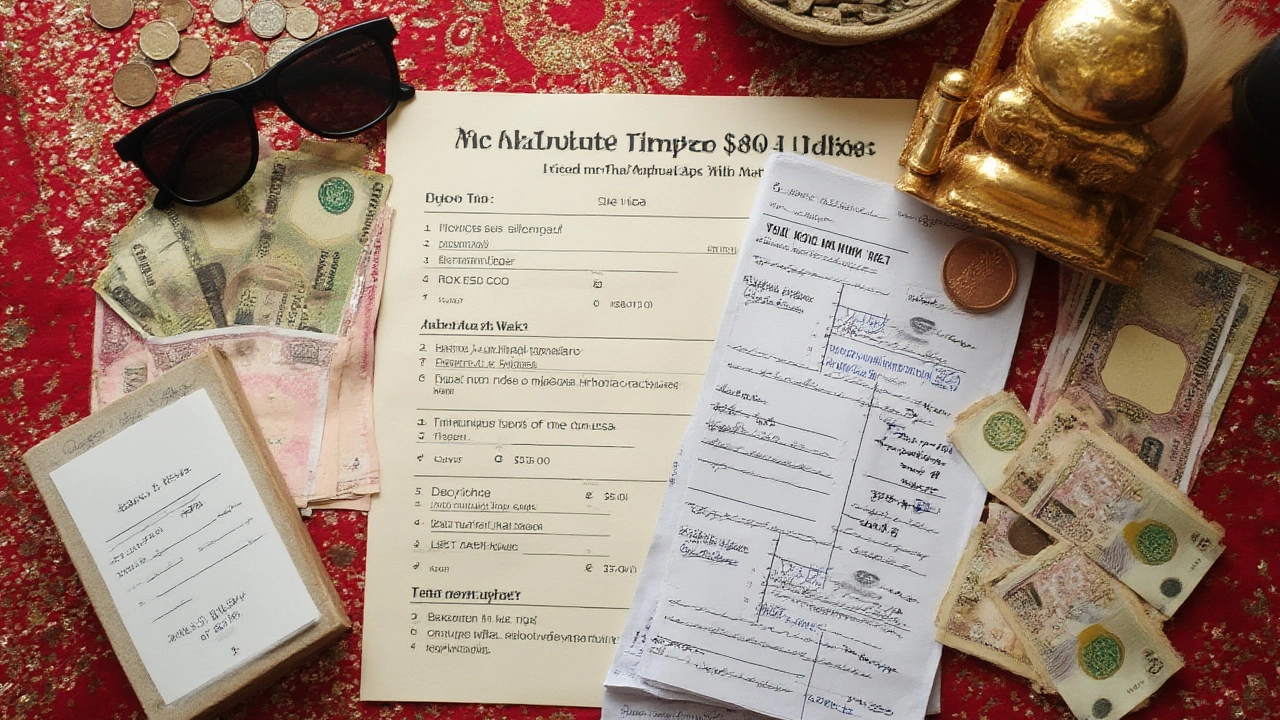Picture this: you’re lounging poolside, drink in hand, not a single care about next week’s bills or dinner reservations. Everything’s sorted. The only problem that could spoil this dream? Not knowing how much this blissful, all-inclusive setup actually costs. Pricing for all-inclusive trips ranges all over the map, and if you’ve ever felt lost trying to budget for one, you’re far from alone. So, what will you really pay for that slice of paradise?
What’s Really Included in ‘All-Inclusive’?
All-inclusive can sound too good to be true. But what does it really cover? Most people expect all meals, snacks, and drinks for a set price, but the reality often comes with plenty of fine print. Let’s peel back the menu. When you book into a typical all-inclusive resort, you’re usually getting three meals a day, house-brand drinks (alcoholic and non-alcoholic), and access to resort activities like pools, gyms, and some entertainment. However, the devil is always in the details. Premium alcohol, à la carte restaurants, and spa treatments are rarely in that ‘all you can eat’ buffet. You’ll often find kids’ clubs, non-motorized water sports like kayaking or paddleboarding, and nightly shows are included. Now, some higher-end places throw in top-shelf booze, room service, private beaches, or even airport transfers. But then again, others charge extra for nearly everything beyond basics—even the WiFi. Yes, in 2025, some resorts still ask you to cough up for WiFi. How mad is that?
If you’re looking at resorts in Mexico, Spain or the Caribbean, the inclusions can swing massively. The Caribbean tends to go heavy on inclusivity, but European resorts might offer ‘half-board’ or similar packages, which throw in breakfast and dinner but leave you fending for yourself at lunch. Family-friendly spots may have babysitting or water parks as part of the deal, while adults-only resorts lean into poolside cocktail service or exclusive beach clubs. Always double-check what's actually bundled before you book. Some resorts have special wristbands for upgraded plans—those are worth every penny if you’re planning to go big on alcoholic drinks or want premium restaurant access.
One thing that saves big money: all-inclusive packages often let you leave your wallet behind once you arrive. You don’t need to budget for everything. But it also means you can’t skip out just because the buffet looks lackluster—dining off-site might not be in the cards if you want full value. That's a double-edged sword if you're picky about food or want to explore local restaurants. And don't overlook the extra fees. Spa days, motorized water sports, room upgrades, late checkouts, and excursions—these aren't automatically included. If it looks too cheap, check those inclusions with a fine-tooth comb.
The Real Cost Breakdown: How Much Will You Spend?
The burning question: what are you really going to pay? Let’s get into the cold, hard numbers, because that’s where your planning gets real. Prices depend on the location, time of year, and how much luxury you’re after. Across 2024 and into 2025, average all-inclusive getaways for a week look like this:
- Budget (3-star): €700–€1200 per person in Europe, €1100–€1750 in the Caribbean or Mexico (flights included)
- Mid-range (4-star): €1200–€2000 per person in Europe, €1800–€2900 in the Caribbean or Mexico (with flights)
- Luxury (5-star): €2800–€6500 per person, often pushing €7000–€10,000 for the Maldives, Seychelles or special private experiences
If you’re lucky and catch a flash sale or travel last minute, you could snag a deal for up to 30% less. On the other hand, peak season—think Christmas, Easter, or mid-summer—can increase prices by a third. Resorts for families with kids’ activities and theme parks often charge a bit more for the extra entertainment and “free” childcare, but trust me, if you’ve got little ones, it’s worth every cent just to enjoy lunch in peace.
Don’t forget flights. Most big tour operators and booking sites bundle airfare into the total, but always check what’s included. Direct flights from Dublin to popular destinations like Lanzarote or Tenerife are often the best value, with a four-hour hop costing less than long-hauls to Mexico or the Caribbean. If you want to cut costs, fly mid-week, avoid school holidays, and be flexible with your dates. Flying on a Tuesday morning is almost always cheaper than a Friday evening.
Other sneaky extras: some packages include airport transfers, but others tack on €30-€80 per person for a shuttle to and from the hotel. Resort fees are cropping up in a few places, particularly in the Caribbean and the US—they’re typically €10–€30 per night and rarely advertised upfront. Tipping might also be expected, even in all-inclusives, especially in Mexico or the Caribbean, so add another €50–€100 per person for a week's trip.

Hidden Costs and Money Pits: What Could Blindside You?
It sounds harsh, but ‘all-inclusive’ hardly ever means everything. Those hidden costs can pile up in ways you don’t expect, especially if you haven’t read the fine print. One common pitfall: the dreaded ‘resort credit’ system. Some high-end resorts give you a stack of ‘credits’ to use on-site, but you’ll soon find that spending them requires even more cash—there’s a real trick in the pricing plans. Want a proper massage or dinner at the fancy steakhouse? That €100 credit might only cover a slice of the actual price. Watch out for exclusive experiences like private cabanas, wine tastings, or sunset cruises—they nearly always cost extra, even if they sound all-inclusive in the brochure.
It’s easy to forget about local taxes, especially city or tourism levies, which you pay at checkout and can hit €2–€7 per guest per night in popular spots. Not all drinks are created equal either: local beers and spirits tend to come free, but order that imported whiskey or a bottle of champagne and your bill balloons. Even in the basic bars, premium spirits can run €5–€15 per drink unless you’ve picked a ‘premium’ or ‘VIP’ upgrade package.
Transport is another trap. Free shuttles to local beaches or sites sound great, but if you want to head out for shopping, nightlife, or local attractions, resort taxis and coaches charge twice the street rate. WiFi charges still shake down unsuspecting travellers, especially in room-only access—yes, it still happens in 2025! Laundry, gym classes, specialty coffee (anything beyond black filter), and activities like deep-sea fishing or scuba diving are usually extras.
A great way to avoid getting fleeced? Ask directly what the wristband colour means—yes, seriously, they use different colours to show your package level. Stick to the activities and restaurants included in your wristband plan. If you’re a foodie or cocktail connoisseur, check the fine print on which bars and eateries are open for your deal. Be wary of upselling right at check-in: front desk teams are trained to sell upgrades, so stick to your guns unless it’s a must-have. Bring a bank card for those unavoidable extras, but aim to use it as little as possible.
Smart Tips for Saving Money and Getting the Best Value
Want to get your money’s worth and not feel like you’re getting rinsed? First off, booking early is still the champion move. If you spot a deal six to nine months out with free cancellation, grab it—prices rarely go down for the good stuff. If you’re flexible or single, solo-travel deals for all-inclusives pop up regularly, especially outside of school holidays. Sometimes you’ll find buy-one-get-one-free deals for Caribbean resorts, if you book direct in late spring or autumn.
Stacking up rewards and loyalty points can pay for flights or upgrades—use travel credit cards and big brand hotel points if you have them. Sign up for price alerts on flight and hotel comparison sites; Skyscanner and Google Flights are your mates here. Often, bigger operators like TUI or Jet2 Holidays have flash sales in January and September, so set reminders for those months.
Don’t ignore packages for less traditional destinations—Cape Verde, Bulgaria’s Black Sea or even the Turkish Riviera offer killer all-inclusive value compared to Spain or the Caribbean. If you’re adventurous, packages to Egypt or Morocco are way cheaper for winter sun and still have strong all-inclusives. For families, look for “kids stay and eat free” offers—those can chop hundreds of euros off your price. Couples should scan adults-only escapes for mid-week bookings; quieter days mean better prices and sometimes free upgrades.
Use WhatsApp or Facebook groups for holiday bargain hunters—real people post last-minute deals and honest reviews, and you’ll get more unfiltered chat than from shiny Instagram posts. Check review sites, but focus on recent stays, not ratings from five years ago. Little perks can make a big difference: free daily minibar refills, included room service, or ‘dine around’ meal plans that let you use restaurants outside your base hotel.
If you want the full-value experience, make a plan of the inclusive activities and try a few things you’d normally skip: tennis lessons, dance classes, local tours, cooking classes—use the resort as a playground. Avoid over-packing. Most places have laundry, and dressing dress codes are more chill now than a decade ago, even in fancier resorts.
Ready to get started? Pick your budget, know your must-haves, read the fine print, and use those booking hacks. That dream of doing nothing, but getting everything, is closer than you think.
